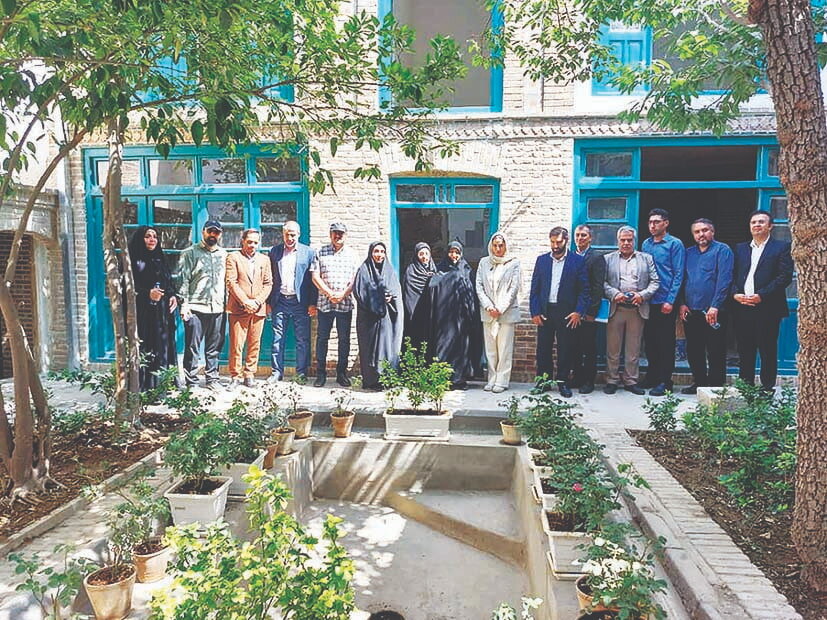Restoration of Jalal Al-e Ahmad’s paternal house nears completion, led by female experts

TEHRAN – The paternal home of Jalal Al-e Ahmad, one of Iran’s most influential 20th-century literary and philosophical figures, is undergoing the final stages of restoration, thanks to the efforts of a dedicated team of Iranian women.
Located in the Sangelaj neighborhood of central Tehran, the two-story Qajar-era structure has been on Iran’s National Heritage List since 2004. The house, which features traditional Iranian architecture including separate andaruni (private quarters) and biruni (public areas), is currently under the supervision of Iran’s national fund for the restoration and utilization of historical and cultural monuments.
The restoration is being spearheaded by Mahboubeh Kazemi-Doulabi, a cultural developer who assumed responsibility for the project in May 2021. At that time, the house was in a severely neglected state, lacking water, electricity, and gas, and had become a shelter for drug addicts and a site for waste sorting.
Kazemi-Doulabi recalled the challenges: “We were not just dealing with physical decay. The house had also become a social problem in the neighborhood. Before starting restoration, we had to reclaim the space through community engagement and cleanup efforts.”
Technical difficulties followed, including severe dampness, structural degradation in the kitchen and beverage preparation areas, and the need to strip layers of cement and plaster that had been improperly applied in previous renovations. To reveal and preserve the original brickwork and Qajar-era character of the house, the team had to carefully dismantle modern additions.
Despite these hurdles, Kazemi-Doulabi reports that the project is nearing completion. “We are proud to say that the house is now close to being fully restored to its historical condition,” she said.
The effort has drawn praise from local officials. Narges Madanipour, head of the Cultural and Social Commission of Tehran City Council, visited the site alongside officials from District 12 and expressed her admiration. “It is inspiring to see capable Iranian women taking the lead in restoring a cultural treasure. Their work ensures that future generations will have access to the legacy of one of Iran’s most profound literary voices,” she said.
Al-e Ahmad may be best remembered by his essay Gharbzadegi ("Westoxification") that describes an unquestioned imitation by Eastern cultures of Western appearance, behavior (particularly consumerism and materialism), modes of reasoning, and expression with an insufficient intellectual understanding thereof.
AM
Leave a Comment